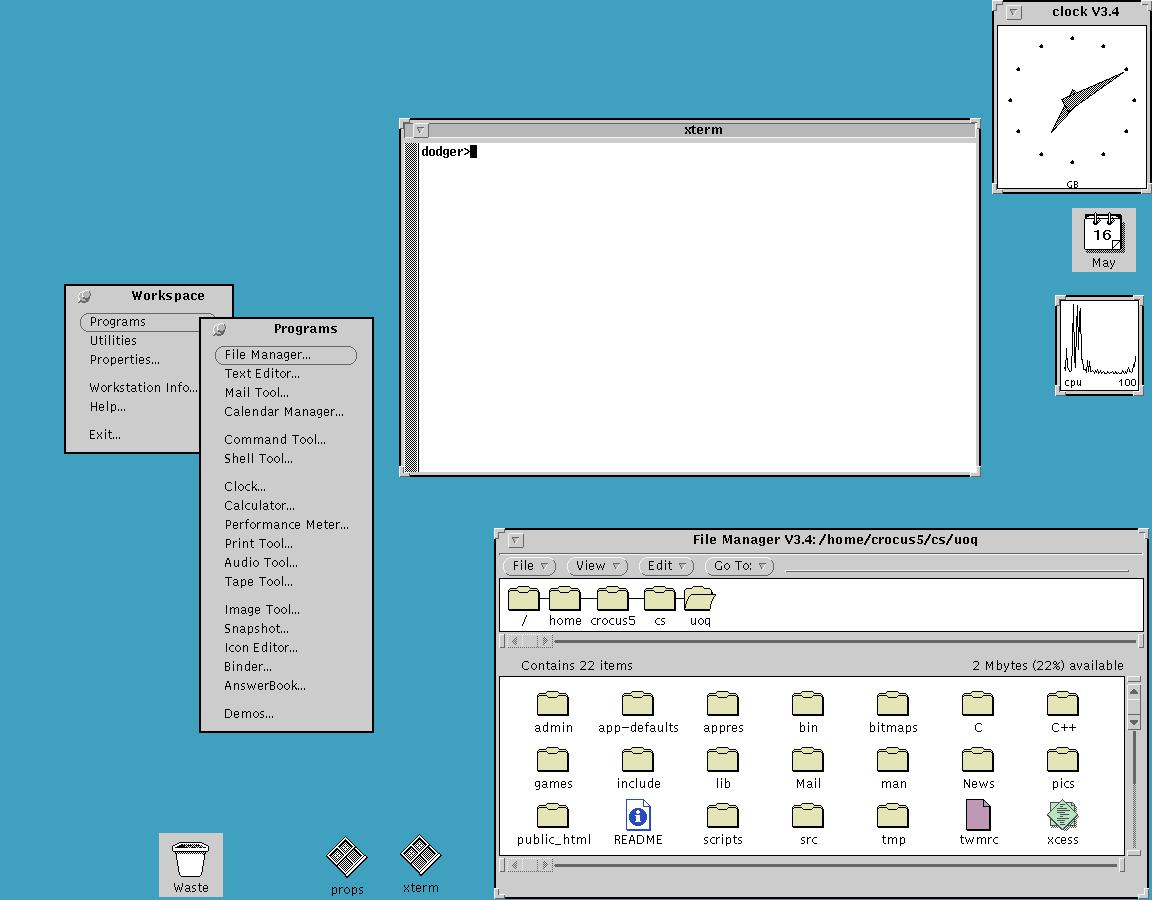Once again the next genuine advance came from the Unix world, though its true significance would not be apparent for several years after the fact. That was the release of Version 10 of the X window system from MIT in 1986. The X design, begun in 1983 but not widely deployed until Version 10, accomplished three important things.
First, in 1987-1988 X established itself as the standard graphics engine for Unix machines, a hardware-independent neutral platform on top of which to build GUIs. This ended five years of confusion and dueling proprietary window systems that had badly fragmented the workstation market, making it uneconomical for most third-party vendors to port their applications. Significantly, X's major advantage over competitors for that role (most notably Sun's NeWS. Networked Window System) was being open source; it was backed by a consortium including most major Unix vendors. X thus prefigured the rise of open-source Unixes five years later.
Second, X supported distributing applications across a TCP/IP network. With X, a program could throw its interface on any networked display it could reach by sending requests to the X server attached to that display. The server, not the application, would then perform all the BitBlts necessary to put pixels on the memory-maped screen. This further decoupled Unix GUIs from the hardware.
Third, X separated policy from mechanism. It provided only generic graphics and event-handling, leaving the esthetic and policy issues in GUI design up to toolkit libraries or applications.
In fact, X represented the first fundamental advance in GUI infrastructure to achieve actual deployment since the days of the Alto itself. The Macintosh may have reinvented and improved the PARC GUI, but remained a monolithic system intimately tied to particular hardware — indeed, for many years the Mac GUI actually relied on patented ROMs and could not have run on machines without them as software only even if the Mac operating system had been ported. The Amiga GUI was similarly tied to specialized graphics chips included with the system. X reasserted the Unix tradition of portability and clean separation of functions.
Figure 2.11. OpenLook (c.1989).

Typical early X display on a Sun workstation. (This is actually a screenshot of a faithful emulation running under Linux.)
Despite its advances, X has attracted its share of brickbats over the years. Some parts of the design (including, for example, the resources feature) are notoriously complex and overengineered. The X APIs (application programming interfaces) are so baroque that toolkit libraries to simplify GUI programming are a stark necessity rather than merely a convenience. The design contains a lot of fossils and scar tissue related to odd and now-obsolescent graphics hardware.
The most serious indictment of X, however, is related to its separation of mechanism from policy. This has led to a huge proliferation of toolkit libraries and window managers. The Unix world, has, so far, been unable to settle on any one of these as as a stable unified standard for GUI look-and-feel. This is in stark contrast with other GUIs like the Alto's, Macintosh's or Amiga's, which wire in large parts of interface policy and thus make for a smoother and more uniform user experience than X provides.
Unix fans believe that over longer timescales the laissez-faire approach of X turns into an advantage. The argument is that policy ages faster than mechanism; X's flexibility helps it adopt new discoveries about UI while engines with more fixed policies gradually lose their appeal and relevance. Who, today, would buy the primitive etch-a-sketch look of the Alto GUI?
This debate is still live. The Linux community, at the forward edge of Unix, remains split between two major toolkits (GNOME and Qt). On the other hand, at time of writing in mid-2004 X is in the final stages of a successful architectural overhaul which gives it some dramatic new capabilities — without breaking compatibility with applications going clear back to the release of X11 in 1987!